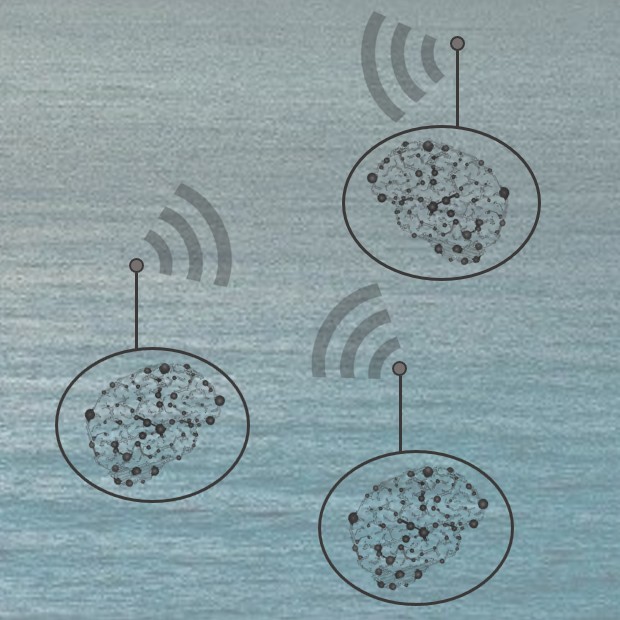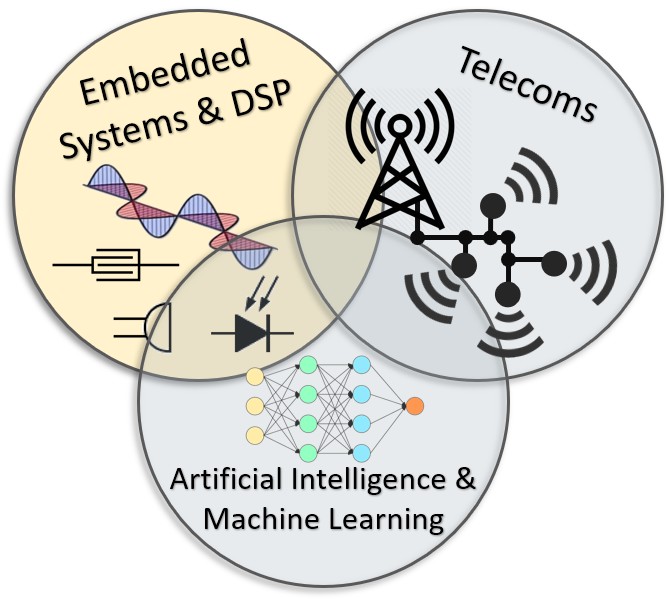
Embedded Smart Sensors Engineering (ESSE) Group
Welcome to the Embedded Smart Sensors Engineering (ESSE) website! This site provides information about the mission and purpose of this research group and what we are involved with.
Why the focus on Smart Sensors?
The ESSE group combines embedded systems and smart sensor engineering with domain-specific, potentially interdisciplinary concepts, for developing specialized computer-based solutions. Our projects are broadly arrange according to those that are “smart inside” (SI) or the smart sensor within, which would typically be a component of a larger system. Or “smart outside” (SO), that is to say the application itself is about making a smart sensor that may use multiple underlying (non-smart) sub-sensors, and is a component or subsystem that is incorporated into a larger system. To clarify this distrinction, SI would for instance be developing the ML part of a smart sensor; SO could for example be an added processing layer that behaves as a smart sensr or is a subsystem of collaborating sensors that work together to provide high-level sensor data or consolidated sensor feeds. The SO aspect typically includes the interface aspect of the smart sensor (e.g. how to 'talk' to it or stream data from it to where it is needed). Currently, most of our projects are more of of the SO nature, i.e. focus on developing devices to be incorporated into other systems.
Our core disciplinary knowledge area is computer engineering, with a focus on digital signal processing, embedded systems, sensor systems, IoT, edge computing, wireless networking / SDR and machine learning. We engage with a range of computing platforms. A focus of many of our projects is towards heterogeneous high performance embedded computing (HPEC) platforms and field programmable gate array (FPGA) processors.
Customized tools, domain-specific languages (DSLs) and supporting scripts are significant enabling techniques to facilitate development practices. Our research and development practices follow a combination of the Scrum method, with Gantt-based planning and design sketching to provide added formality to the process.

Knowledge Areas
The rapid expansion of IoT and I4R-related technologies has meant a tremendous growth in the demand for sensor technologies, to provide means by which organisations can rapidly obtain accurately insights into current conditions of their work and operational contexts. This interest for more sensing and sensors is not limited to human work contexts; there is need as well in more educational and recreational contexts, as well as broader areas of environment sensing. Currently there is an extensive range of sensors available on the market, ranging from expensive high-end solutions to more easily accessible low-cost solutions. However, having a sensor is only the starting point of being able to leverage the data that they provide. Significant considerations involve the placement of sensors, the powering of them, how their data is obtained and stored, and, very importantly, how this data is processed and leveraged to make useful decisions.
The processing of sensor data may happen at various stages in the sensing system, between the actual point of sensing the data and the final point where the information is presented and critical decisions are made. Accordingly, aspects of the processing, which may be more than simple pre-processing, may happen within the sensor itself (e.g. highly localized decision making), or at an intermediate stage (e.g. consolidating readings from a subset of sensors) or right at a central point. This emphasises the need for the concept of ‘smart sensors’, that is to say sensors that have the ability to process and interpret their own data, and to make decisions or respond to sensory stimuli without having to feed this data to an external point for the data to be acted upon. The direction of ESSE flows from this perspective of sensor systems, where we aim to focus towards distributed sensing applications where sensor data is processed and acted upon at various points in the system. This type of sensor architecture is often relevant, if not essential, for larger scale systems and safety-critical systems in order to save power and bandwidth, and to achieve greater responsiveness.

Vision of ESSE group
The vision for the ESSE group is to equip students with top-quality skills, useful to both needs of local industry as well as being globally desirable. We aim at having part of students' learning course-based or closely guided, and subsequently letting the students diverge into more specialized areas of the broader field of smart sensors and embedded systems development and prototyping. Ideally, students will be working on real-world projects for industry, with the university supervisors providing support and skills training, and the industry partners clarifying their needs and reviewing progress and demonstrations.
A major aspect of planning the ESSE group is building strong collaborative partnerships with local and international industry and with other university research groups. We are particularly grateful to have recently entered into academic collaboration and exchange programmes with two overseas universities, which are helping us achieve our aim of providing students authentic industry-relevant experiences to help prepare them for the global market. Our "Partnerships" page provides further details.
Students
Many of our students are industry-based, working part-time on industry-related research projects. Due to the decentralized structure of this group, we use non-traditional approaches to provide supervision and one-on-one training. For instance, we rely heavily on tools such as Slack, Google Docs and TeamViewer to allow for this virtual and visual collaborative work. While many of our projects are linked to local industries, we also strive towards building international collaboration with industries and universities abroad, to provide our students greater depth of experiences, to broaden their insights into design approaches and strategies, and to improve our members’ cross-cultural skills and experiences. These opportunities are supported by collaborative grants and industry-supported mobility programmes.
The ESSE experience aims to equip graduates with knowledge and experience in industry-relevant tools and development methods to get them ready for today’s high-tech engineering practices.
